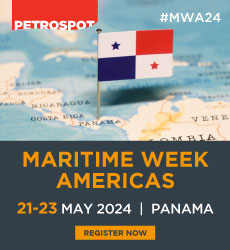Writing exclusively for Bunkerspot, Panos Spiliotis, Senior Manager EU Transport at Environmental Defense Fund, assesses the progress made at the 81st meeting of the Marine Environment Protection Committee (MEPC 81).
Though essential to the global economy, shipping is also a significant and increasing source of climate pollution. To limit the worst effects of climate change, the sector must do its fair share and dramatically reduce its emissions. And if we’re to have a chance to hit the Paris Agreement’s temperature target of 1.5 degrees Celsius, this must happen soon. Time is running out.
This week’s negotiations at the 81st meeting of the International Maritime Organization’s (IMO) Marine Environment Protection Committee (MEPC 81) were successful in advancing talks between countries on a set of global measures to decarbonise shipping. Last year, the IMO adopted the landmark 2023 Strategy that aims to bring shipping to net zero by 2050, while achieving a set of ambitious interim goals. There is now increased support for an approach that combines a goal-based fuel standard – regulating the greenhouse gas intensity of fuel – with an economic measure in the form of a universal price on greenhouse gas emissions. Country delegates must now develop the right policy details, and there are three key aspects that they need to get right.
First, as shipping transitions to a new set of marine fuels, it is crucial that the emissions and other impacts of their entire lifecycle of fuels are taken into account. The IMO’s interim Lifecycle Assessment Guidelines (LCA Guidelines) are a good starting point. As the guidelines are further refined by a soon to be established scientific group, robust emissions factors must fully reflect fuels’ climate pollution impacts, including upstream effects. Besides directly emitted greenhouse gases, the policy needs to reflect the best available science on indirect greenhouse gases, like hydrogen, as well as impacts related to Indirect Land Use Change (ILUC).
Second, to meet its ambitious 2023 Strategy IMO will need a fully-fledged economic measure that prices all greenhouse gas emissions. Governments will be in a much better position to meet the tight deadline of their work plan if they make further progress on how to collect and distribute revenues ahead of the next Committee meeting in September. An expert workshop scheduled for the summer will be a key opportunity to assess possible ways forward that incentivise the energy transition while supporting developing countries, especially small island developing nations and least developed countries.
Last but not least, the shipping industry must upgrade the energy efficiency of ships to meet the earliest target for reducing emissions by 20 to 30% by 2030. While a price on greenhouse gas emissions can go some way towards incentivizing optimal speeds and Energy Saving Technologies, IMO’s Carbon Intensity Indicator can be refined and improved in time to secure the necessary changes. Countries and shipping stakeholders should come to MEPC 82 with concrete proposals on refining CII and giving necessary clarity to its enforcement.














